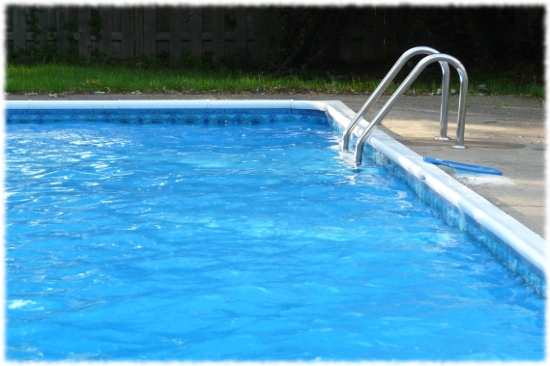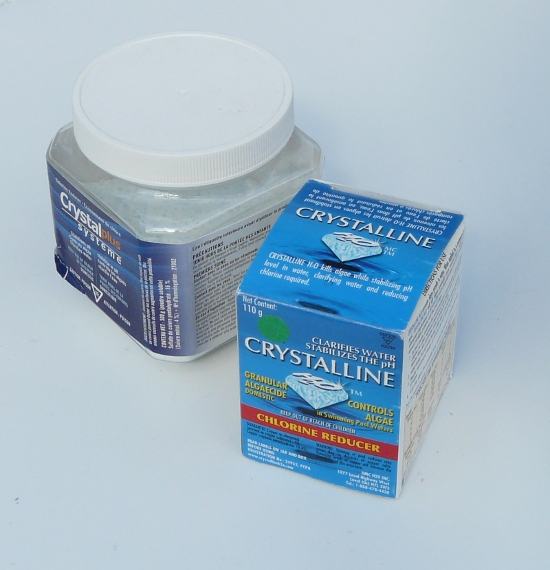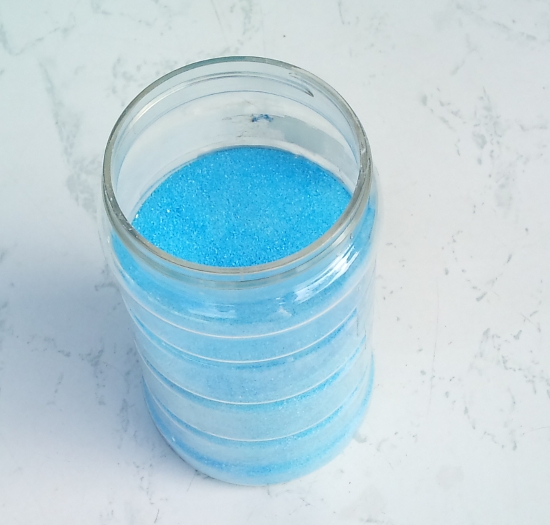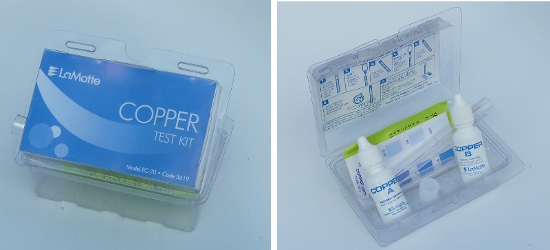Low chlorine pool care
 Elemental Chlorine is
the standard pool sanitizer used all over the world. It's reasonably priced,
it's highly toxic to all forms of life, it's very aggressive, it bleaches even dead organic material and keeps therefore the water clear.
Elemental Chlorine is
the standard pool sanitizer used all over the world. It's reasonably priced,
it's highly toxic to all forms of life, it's very aggressive, it bleaches even dead organic material and keeps therefore the water clear.
Health concerns about elemental Chlorine in the water
The problem is that it causes not only itching and skin irritation but
may as well cause asthma, respiratory problems and even cancer. The
the water from the pool gets into your body while swimming. Your body
absorbs the water through your skin.
You can notice that your body takes up significant amounts
of water because will need to go to the bathroom more often after
spending a long time in the pool. Together with the pool water most of
the chemicals dissolved in the water get as well into your body.
Over the years many alternatives to chlorine have been proposed.
There are a number of low chlorine of chlorine free pool solutions
available on the market. In many cities the only approved
pool care method for public pools is however still chlorine.
If you have however your own pool then you can use whatever system
you prefer.
Here are some links to alternative pool care system. As you can see
by chlorine is not the only solution. In this article we will however
discuss a low chlorine pool solution that does not require any special
equipment or expensive chemicals.
Feel free to send me a link if you know about other interesting pool care systems not using chlorine.
There is as well a popular low maintenance pool care system known as "salt water system". A "salt water system" is just different a type of chlorine pool. By running a current between
electrodes which are in a sodium chloride (NaCl) solution you are converting chlorine ions into
free elemental chlorine. The elemental chlorine is generated in the water instead
of being added as a separate chemical to the water.
Clean and save water at low chlorine levels
This article is not about any alternative pool care
system that requires investments into new equipment or conversion of the pool
in any way. It is about maintaining your existing chlorine pool such that
you save money and don't need much lower chlorine.
The typically recommended chlorine levels in standard chlorine pools are:
Typical free chlorine levels in private pools: 1-3 ppm
Typical free chlorine levels in public pools: 3-10 ppm
Max allowed free chlorine level in tap water: 4 ppm
Common good quality tap water: 0.3ppm to 0.5ppm
ppm=parts per million
We want to get to chlorine levels which are 1/10 of the above levels and
it is possible to do that. It will be like swimming is fresh tap water.
The chlorine is used for three things at the same time:
- Kill algae
- Bleach and oxidize organic particles and fine debris (e.g dead algae, small particles from trees and plants, sun lotion, ...)
- Kill bacteria and germs
For a private swimming pool the killing of algae is the thing that
needs most of the chlorine. Fine particles can be removed with
a good filter and bacteria is not a big concern as the amount of people
in the water compared to volume of water is very low in a private pool.
The very few bacteria that could possibly survive in a private pool will
die over time even at
very low chlorine levels (0.5ppm or less).
Therefore if you add an algaecide to your pool water then you will not
need that much chlorine to control the growth of algae and you can
maintain good water quality at chlorine levels of about 0.5 ppm.
The water will not smell, itch or burn in the eyes. It will feel like
swimming in clean drinking water.
The idea is not new. There are a number
of fairly expensive commercial products sold as "chlorine reducers" which
are essentially a mixture of an algaecide and a water clarifier (a chemical
that makes the filter more efficient).

examples of commercial chlorine reducers
Which algaecide to use?
A problem with pool chemicals is that the manufactures do not
have to declare what is inside. There are only very few manufactures
who list all the chemicals that their algaecides are made of. I would not recommend
to buy pool chemicals where the manufacturer did not declare the content.
Your body will absorb those chemicals while swimming and you don't want
to swim in an unknown cocktail of chemicals.
Some common algaecides:
- n-Alkyl Benzyl Ammonium Chloride, a dark brown liquid
- Poly(oxyethylene) (dimethylimino) ethylene (dimethylimino) ethylene dichloride, a light brown liquid
- copper sulfate pentahydrate, a dark blue liquid or powder
In theory you could use any of the above algaecides but there are different
advantages and disadvantages to all of them.
n-Alkyl Benzyl Ammonium Chloride:
advantage:
-does not stain the pool
disadvantage:
-may cause foams in the water
-no long term experience available
-no test available to determine the concentration in the pool water
Poly(oxyethylene) (dimethylimino) ethylene (dimethylimino) ethylene dichloride
advantage:
-does not stain the pool
disadvantage:
-no long term experience available
-no test available to determine the concentration in the pool water
copper sulfate pentahydrate
advantage:
-long experience available (more than 100 years)
-test kit available to test concentration in the pool water
-very cheap compared to the other products
-effective not only against algae but also other microorganisms such
as bacteria
disadvantage:
-may stain the pool at high concentrations
-very toxic to some fish
To regularly add an algaecide to the pool water without knowing how
much is still in the water is not a good idea at all. All of the algaecides
are poisons at too high concentrations. How much algaecide is consumed
over times depends on factors such as sun light, amount of algae cells
that get into the water (from the air, rain, leaves), water temperature.
All these factors are really totally out of your control and after
a few weeks you would have no idea how much algaecide is still present
in the water unless you can measure it. Most algaecide manufactures
show on their products "a suggested weekly maintenance dose" but that
is really meaningless will usually lead to too high algaecide concentrations
over time.
Copper(II) Sulfate (anhydrous or pentahydrate)

copper sulfate pentahydrate (CuSO4 * 5H20)
Copper(II)sulfate or any solution of Cu2+ ions can be used as very effective
algaecide. Cu2+ ions are very toxic to some fish, all kinds of algae
and small microorganisms. Copper ions can however be handled very well
by the human body in very low concentrations.
Copper has been used for centuries to make cooking gear and
water pipes. Mineral drinks and tablets used as food supplements do as well contain
Cu2+.
However the concentration is a very important factor.
The toxicity of copper sulfate is about 750mg for an adult person of 75kg.
The cheapest and easiest way to add Cu2+ ions to your pool water is to
use copper sulfate powder. Copper sulfate comes in two forms. Anhydrous copper sulfate, a white powder, and copper sulfate pentahydrate a blue powerder.
One can convert anhydrous copper sulfate into copper sulfate pentahydrate by
adding a bit of water and to get again anhydrous copper sulfate you would
just have to heat it. The copper sulfate found in stores is usually
copper sulfate pentahydrate with a little bit of anhydrous copper sulfate. A bit of anhydrous
copper sulfate in the powder ensures that the copper sulfate stays a fine powder and does
not bake together.
Copper sulfate is cheap (about 5-10 dollar per pound) and available at any store selling chemicals.
If there is no such store in your area then try ebay. Copper sulfate is
not a hazardous substance and can be sent out in the mail.
Copper sulfate can possibly stain your pool if used in too high concentrations
and the color of your pool walls is white. It does not leave any visible stains
on blue pool liners.
There are various copper ion test kits on the market. Copper sulfate is
different from chlorine as it will not evaporate over time. It will
stay in the water and it will only be consumed by algae and microorganisms.

copper test kit from LaMotte,
For more information about this specific test kit see:
http://www.lamotte.com/pool_spa_water/pool_spa_professional_products/specialty_test_kit_series.html
Using Copper(II) Sulfate as a pool algaecide
It is very important to keep the water hardness, PH and the copper ion concentration at the right level. The effectiveness of copper ions as an algaecide is related
to the hardness of the water. Copper sulfate is more effective in soft water. The lower the hardness the better.
The optimum concentration of copper ions is 0.3ppm to 0.4ppm. This is a very small amount. Be careful!
It's just a spoon full of Copper(II)-Sulfate per 60000 liters of water.
| Substance | recommended concentration |
|---|
| copper ions | 0.3ppm - 0.4ppm |
| PH | 7.0 - 7.4 |
| calcium hardness | max 300ppm |
| Alkalinity | 100-150ppm |
| Free elemental choline | 0.5-1ppm |
Alkalinity refers to the PH buffering capability of the water. The PH
will bounce up and down if the alkalinity is too low. The pool
chemical used to increase the alkalinity is usually just
Sodium Bicarbonate. Sodium Bicarbonate is as well
the main component of baking soda but it is much cheaper to buy
a bucket of alkalinity increaser for pools.
FAQ part
I got algae. What now?
This can happen if you let the chlorine level drop to zero for
a few days and it is very warm and sunny. It can as well happen
after a big summer storm that washed a lot of debris and leaves
from surrounding trees into your pool.
Solution: check the copper ion level and set it to 0.3ppm or 0.4ppm.
Increase the chlorine level to 1ppm by adding a few cups of
chlorine shock. Let the pump run more frequently to filter out
the dead algae particles. The problem should go away after
a few days.
Explanation: We increase the chlorine level rather than the copper ion level
because the chlorine will easily go down by itself.
Is Copper(II)Sulfate save?
Copper(II)Sulfate is a poison. All algaecides are toxic.
It is important to keep it at the right concentration (0.3ppm - 0.4ppm)
and then it is save for humans but kills both bacteria and algae.
The toxicity of copper sulfate is about 750mg for an adult person of 75kg.
Do not drain pool water that contains copper sulfate via a septic tank
as it would kill the bacteria in septic tank and those bacteria are
essential for the septic system to function.
Reliable copper test kits are available on the market and it is
thus possible to keep the concentration at save levels even when
Copper(II)Sulfate is used for a long time.
Why can I buy chlorine as a powder or pucks if elemental chlorine is a gas?
Chlorine powder and and chlorine shock is
calcium hypochloride
Calcium hypochloride
produces instantly chlorine gas when it gets into contact with
an acid. When dissolved in almost neutral water then it will
slowly release chlorine gas into the water.
Chlorine tablets (pucks) are Trichloroisocyanuric acid
(known as Trichlor Isocyanuric chloride or Trichloro-S-Triazinetrione, some pucks contain
Dichloroisocyanuric). Try to avoid them. Here is why: They
produce atomic chlorine and cyanuric acid when dissolved in water.
The cyanuric acid is a stabilizer and it stays forever in the
water. It can form with copper a dark blue, almost purple powder
called copper cyanurate. Copper cyanurate does not dissolve in water and
stains your pool. Those pucks take the copper out of the water
and stain your pool.
Always use calcium hypochloride powder in combination with
copper sulfate algaecide.
What to do if my water is too hard?
Copper ions are less effective as algaecide if the water is harder.
The best pool water for a copper ion pool is therefore rain water.
Do not drain your pool after the winter. Leave the melted snow water and
rain water as much as possible in the pool. Rain water and melted snow water
is very soft water.
I have a sand filter. How often do I need to backwash?
It is normally enough to backwash your sand filter once a month.
The use of Copper(II)Sulfate as an algaecide does not change
anything with regards to the backwashing of the filter sand.
Is it true that copper ions stains blond hair?
A dark blue and concentrated solution of Copper Sulfate will
stain blond hair green (yellow + blue = green). It is not possible to
remove those stains other than cutting the hair.
Staining happens however only at way too high concentrations.
There is no visible staining to hair or pool liners at 0.3ppm - 0.4ppm. The
water is clear and not blue at 0.3ppm - 0.4ppm.
You might get a light gray stain on white concrete pool tiles after
some years. Copper ions may as well be absorbed by the porous cement
joints between the tiles and cause stains there.
The best type of pool architecture for a copper ion pool is a blue
liner pool.
Can I use copper metal rods and run a DC current between them?
Yes, you could install two copper rod somewhere in the pipes between
pump and pool and run a small DC current between them. This will
dissolve one of the rods and generate Cu2+ ions. This is how
the commercial products
www.ecosmartepool.com and
www.floatron.com work.
The installation of the electrodes requires however physical modifications to your pool and just
adding a tea spoon of Copper Sulfate does not need those modifications.
Are there any restrictions when draining the pool?
Cu2+ ions kill not only algae but as well bacteria. It is
therefore not good to drain such pool water into a septic system.
It is however normally OK to drain into the public sewer or into
a ditch by the road. It's OK for several reasons:
- The water volume of your pool (even a large pool) compared to
the total volume of water in the sewer is small. The pool water is therefore
diluted a lot.
- There are a lot of bacteria in the sewage water. They will immediately
bind to the ions and disable them. In other words there are a lot
more bacteria than we have Cu2+ ions.
How do I close my pool at the end of the season?
The colder the water gets towards the end of the season the less
chlorine and copper sulfate you will need. Stop adding any chlorine
and let the Cu2+ ion level drop. At water temperatures
of 15'C (60'F) or less you will have totally clear water with just
O.1ppm of copper ions.
Try to close the pool as late as possible. Wait until all the leaves
from surrounding trees have fallen and remove regularly the leaves
from the pool with a leave skimmer net. Vacuum leaves and debris
out from the bottom of the
pool when you lower the water level on the day of the pool closure.
This way you will be able
to keep the water clean even until after the winter and you will
not need much shock to reuse the water at the start of the next season.
Revision history
2011-08-01 -- initial version
2012-05-10 -- updated FAQ part
2014-06-09 -- Bruce Perens clarified that pucks are not
calcium hypochloride but Trichloroisocyanuric acid
(Trichloro-S-Triazinetrione)
© Guido Socher, version 2014-06-09

 Elemental Chlorine is
the standard pool sanitizer used all over the world. It's reasonably priced,
it's highly toxic to all forms of life, it's very aggressive, it bleaches even dead organic material and keeps therefore the water clear.
Elemental Chlorine is
the standard pool sanitizer used all over the world. It's reasonably priced,
it's highly toxic to all forms of life, it's very aggressive, it bleaches even dead organic material and keeps therefore the water clear.


